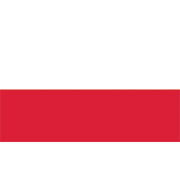Fiscal subject related
When the traveler provides his Unique ID Number to the seller, his details will be automatically checked against the data provided in the mobile application. This will avoid, e.g., errors when entering data manually. This is a convenience for both travelers and sellers.
In order to use the full functionality, the traveler must confirm his account once at the tax-free check-in at the border. Authorization is made, at the traveler's request, by an officer of the Customs and Tax Service during the check-in.
To make it easier for travelers to manage their tax-free documents, the Ministry of Finance has placed QR codes to be scanned on a mobile device in:
- border customs offices,
- places where tax-free documents are handled for travelers,
- near border or airport information kiosks and bulletin boards
After scanning the QR code, the traveler goes to the TaxFree website, where, after entering the unique system number of the TaxFree document (UNS), he can check the status of the TaxFree document on an ongoing basis and download the mTAX FREE PL application. It facilitates access to the electronic form of the tax-free document issued by the seller and gives him the ability to easily manage his documents.
Other news from Poland
E-invoicing-KSeF 2.0 API Testing begins: the Ministry of Finance opens integration Environment
 Poland
Author: Nikolina Basić
Poland
Author: Nikolina Basić
Poland’s Ministry of Finance has opened the integration environment for KSeF 2.0 API testing, allowing software providers to check system compatibility ahead of the mandatory rollout. A detailed user manual and technical support are available, with key milestones leading up to the full production launch on February 1, 2026. On September 30, 2025, the Ministry of Finance of Poland officially launch... Read more



The Polish Ministry of Finance clarifies VAT rules for Deposit-Refund packaging system.
 Poland
Author: Nikolina Basić
Poland
Author: Nikolina Basić
The Ministry of Finance has clarified VAT treatment for beverage packaging under the deposit-refund system: deposits are outside the VAT scope, do not require VAT invoices, and should be recorded in the non-fiscal section of receipts. If packaging is not returned, the business introducing it must increase its VAT base by the unreturned deposit value and report it in the following year’s first VAT... Read more



Ministry of Finance Releases Updated Q&A on KSeF 2.0 ahead of the 2026 rollout.
 Poland
Author: Nikolina Basić
Poland
Author: Nikolina Basić
The Polish Ministry of Finance has released an updated Q&A guide on the National e-Invoice System (KSeF 2.0) to help taxpayers prepare for its phased rollout starting February 1, 2026. The resource clarifies system features, access options, and implementation steps, ensuring businesses are ready for the transition to structured e-invoicing. The Ministry of Finance of Poland has published a revised... Read more



Poland launches a new version of the e-receipts mobile app.
 Poland
Author: Nikolina Basić
Poland
Author: Nikolina Basić
Poland’s Ministry of Finance has launched an updated version of the free e-Receipts mobile app, enabling users to receive, store, and share electronic receipts across multiple devices for seamless expense management. The app, part of the government’s digital initiative, also allows manual entry of paper receipts, warranty tracking, and reporting of purchase irregularities. The Ministry of Finance... Read more



Poland to Launch KSeF 2.0 Test Environment in September ahead of full rollout in 2026 and officaly adoption of E-invoice legislation
 Poland
Author: Nikolina Basić
Poland
Author: Nikolina Basić
Poland is preparing to launch a new version of its e-invoicing platform, KSeF 2.0, with a test environment becoming available in September 2025. This transition follows the recent signing of new e-invoicing legislation and is set to officially launch for businesses on February 1, 2026, with a later date for smaller companies. E-invoicing in Poland: as of 1st September, the test version of the Nati... Read more



Poland set to launch VAT Deposit System in October 2025: important features
 Poland
Author: Nikolina Basić
Poland
Author: Nikolina Basić
Poland will introduce a new VAT deposit system (kaucyjny system) on 1 October 2025, requiring refundable deposits on single-use beverage packaging, with VAT applied only to unreturned deposits. The rules clarify VAT liability, allow refunds via cash or non-cash methods, and oblige businesses across the supply chain to update invoicing, reporting, and refund systems to avoid penalties. Poland is pr... Read more



Large tax inspections in Poland – fines for missing receipts
 Poland
Author: Nikolina Basić
Poland
Author: Nikolina Basić
Poland has intensified tax inspections this summer, targeting especially seasonal retailers and focusing on the proper issuance and delivery of fiscal receipts, with fines of up to PLN 1,000 per violation. Authorities emphasize that printed receipts must be physically handed to customers (or sent electronically if agreed), and failure to do so—even if printed—is treated as a violation. Tax audits... Read more


